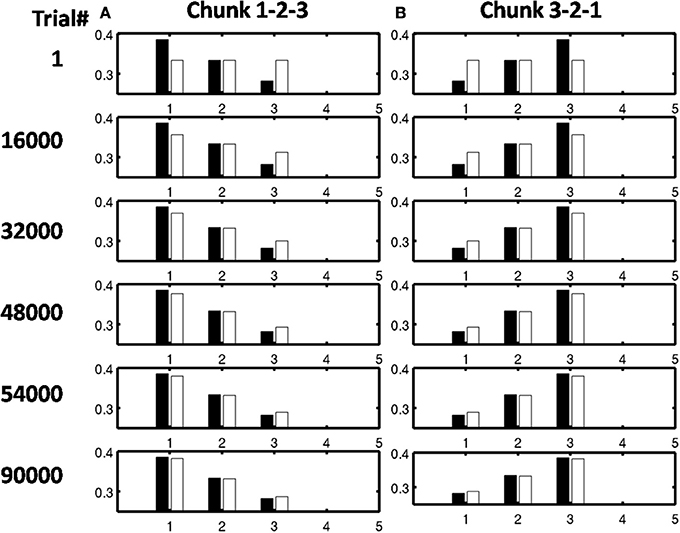By Saul McLeod, published 2008
- Proactive Interference
- Serial Position Effect Test
- Postman And Phillips Serial Position Effect And Recalls
- Primacy Position Effect
- Serial Position Effect And Recall
- Recency Effect
REHEARSAL PROCESSES IN FREE RECALL. One approach to the analysis of the effects of input position on recall has been. Experiments by Postman and Phillips. Download Citation on ResearchGate| The Serial Effect of Free Recall| The serial position curve is characterized by a steep, possibly exponential, primacy effect extending over the 1st 3 or 4 words in the list, an S-shaped recency effect extending over the last 8 words in the list, and a horizontal asymptote spanning the primacy and recency.
Some of the strongest evidence for the multi-store model (Atkinson & Shiffrin, 1968) comes from serial position effect studies and studies of brain damaged patients.
Experiments show that when participants are presented with a list of words, they tend to remember the first few and last few words and are more likely to forget those in the middle of the list.
This is known as the serial position effect. The tendency to recall earlier words is called the primacy effect; the tendency to recall the later words is called the recency effect.
Murdock (1962)
Procedure
Murdock asked participants to learn a list of words that varied in length from 10 to 40 words and free recall them. Each word was presented for one to two seconds.
Proactive Interference
Results
He found that the probability of recalling any word depended on its position in the list (its serial position).Words presented either early in the list or at the end were more often recalled, but the ones in the middle were more often forgotten. This is known as serial position effect.
The improved recall of words at the beginning of the list is called the primary effect; that at the end of the list, the recency effect. This recency effect exists even when the list is lengthened to 40 words.
Conclusion

Murdock suggested that words early in the list were put intolong term memory (primacy effect) because the person has time to rehearse each word acoustically. Words from the end of the list went into short term memory (recency effect) which can typically hold about 7 items.
Words in the middle of the list had been there too long to be held in short term memory (STM) (due to displacement) and not long enough to be put into long term memory (LTM). This is referred as a asymptote.
In a nutshell, when participants remember primary and recent information, it is thought that they are recalling information from two separate stores (STM and LTM).
Glanzer and Cunitz (1966)
Procedure
Glanzer and Cunitz presented two groups of participants with the same list of words. One group recalled the words immediately after presentation, while the other group recalled the words after waiting 30 seconds. These participants had to count backwards in threes (the Brown-Peterson technique), which prevented rehearsal and caused the recency effect to disappear. Both groups could free recall the words in any order.
Results
The words at the end of the list are only remembered if recalled first and tested immediately. Delaying recall by 30 seconds prevented the recency effect.
References
Atkinson, R. C., & Shiffrin, R. M. (1968). Chapter: Human memory: A proposed system and its control processes. In Spence, K. W., & Spence, J. T. The psychology of learning and motivation (Volume 2). New York: Academic Press. pp. 89–195.
Glanzer, M., & Cunitz, A. R. (1966). Two storage mechanisms in free recall. Journal of Verbal Learning and Verbal Behavior, 5(4), 351-360.
Murdock, B. B. (1962). The serial position effect of free recall. Journal of Experimental Psychology, 64(5), 482–488.
How to reference this article:
McLeod, S. A. (2008). Serial position effect. Retrieved from https://www.simplypsychology.org/primacy-recency.html
Home|About|Serial Position Effect Test
A-Z Index|Privacy PolicyPostman And Phillips Serial Position Effect And Recalls
|Contact UsPrimacy Position Effect
This workis licensed under a Creative Commons Attribution-Noncommercial-No Derivative Works 3.0 Unported License.
Company Registration no: 10521846
Serial Position Effect And Recall
Recency Effect
Results
The results of the experiment showed that the percentage of recalling for the letters at the beginning of the list were 62% and the percentage of recalling for the litters presented in the middle of the list were 50% and the percentage of recalling for the letters at the end of the list were 65%.
Discussion
As shown in the section above the results of the experiment were as expected and the two hypothesizes of were supported. Based on the previous research that was made by Murdock (1962) about the serial position effect. The expectation were that the letters at the beginning of the list will be remembered better that the letters in the middle of the list and that is because the participants will start to rehearse the letters they see at first and rehearsing the letters can move them from the short term memory to the long term memory to be recalled again when needed (primacy effect). And the other expectation was that the letters at the end of the list will be remembered better than the letters at the beginning of the list and that’s because and that because the participants will keep the letters they saw last in the short term memory and they will remember it better because it the last thing they saw (recency effect). And the loss of the letters in the middle of the list from the memory can be explained by 'displacement' when the last few letters are presented they displace the letters that were...